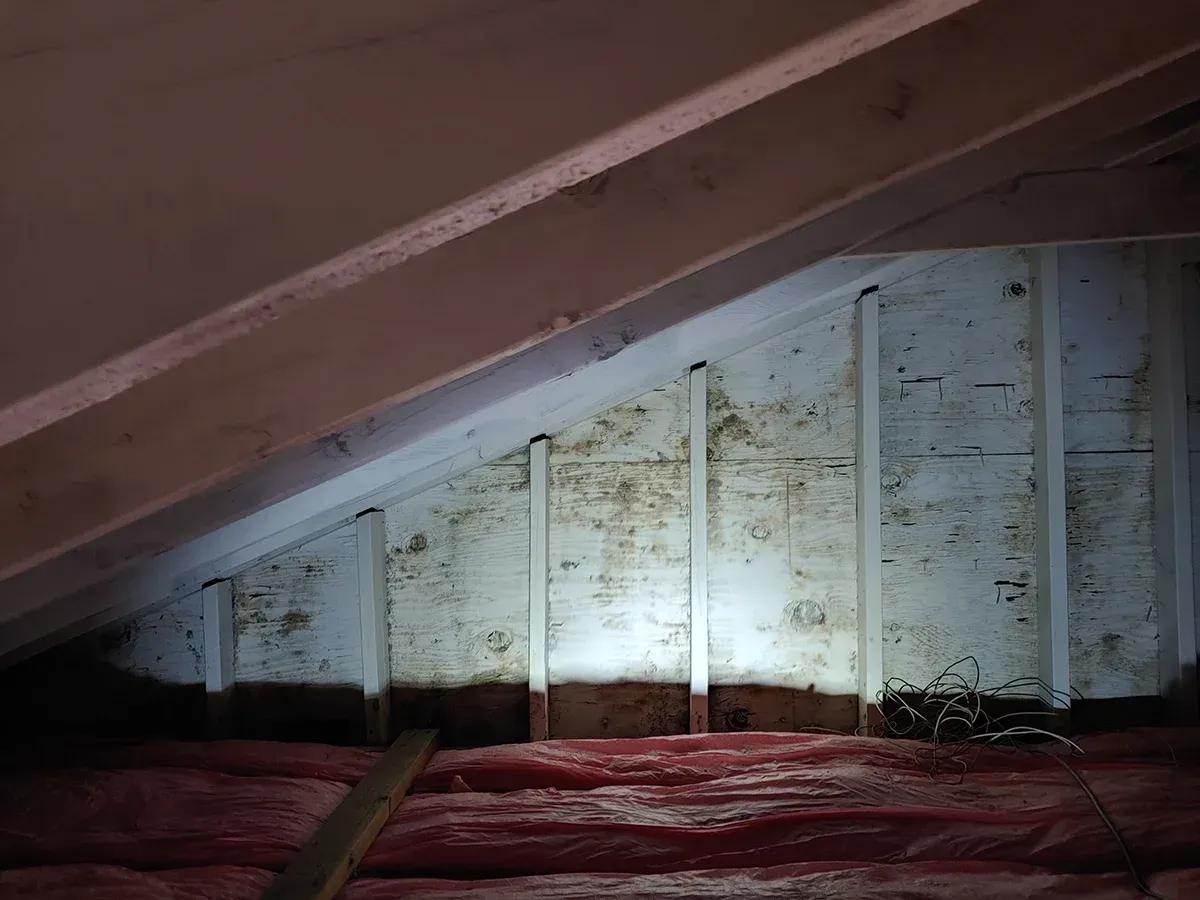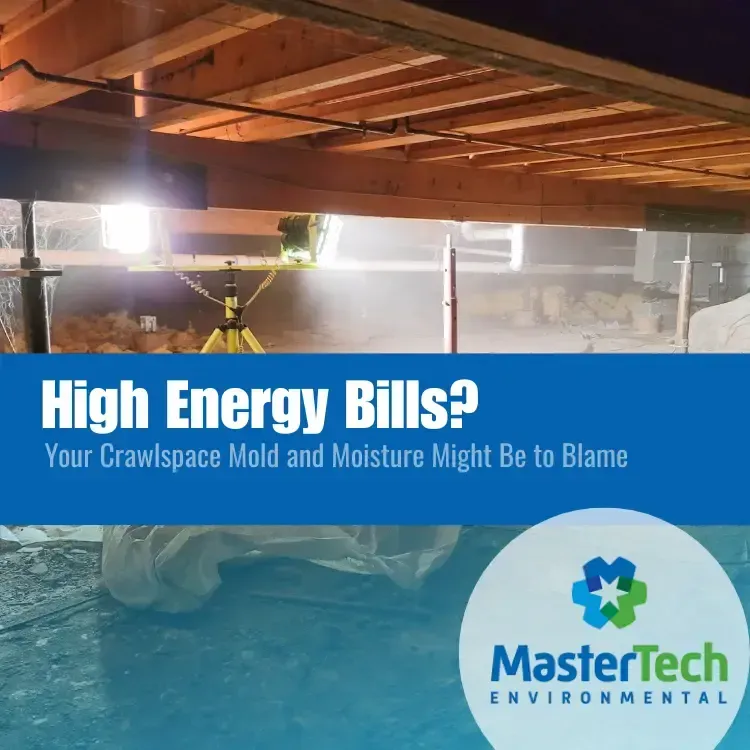Attic Mold Remediation Myrtle Beach: Protecting Your Home’s Air from Hidden Contamination

You smell something musty when the AC kicks on — is it coming from your attic?
It’s unsettling when a wave of mustiness greets you every time your air-conditioning starts. The odor wafts from vents, yet looking around your living room reveals no visible problem. Eventually, you climb into the attic and find black and white patches on the roof decking and rafters. You may feel embarrassed for missing it, angry about the potential cost, and worried about what your family has been breathing. That mix of emotions is normal. Hidden attic mold often goes unnoticed because attics are rarely visited and because spores can travel quietly through ductwork.
When mold establishes itself overhead, it isn’t just an eyesore; it becomes an air-quality issue for your entire home. Molds release spores whenever they are disturbed. An HVAC system that passes through or near a moldy attic can carry those spores into bedrooms and living spaces, exacerbating allergies and asthma. Any mold growth indoors indicates a moisture problem and needs to be addressed promptly. Attic mold remediation isn’t about cosmetic cleaning—it’s about eliminating a contamination source, fixing the underlying moisture and ventilation issues, and protecting your air ducts from becoming a delivery system for spores.
How Attic Mold Enters Your Living Space
Mold contamination in the attic rarely stays contained. The attic may be hidden above your head, but the pathways that connect it to your living space are surprisingly efficient. Airflow, ductwork, and even subtle pressure changes in your home can act as invisible highways, carrying spores downward where your family lives and breathes. Understanding these entry points shows why attic mold is more than an isolated issue; it’s a whole-house problem. Here are the most common ways attic mold infiltrates the rest of your home.
· Supply and return ducts run through or near a moldy attic. Warm air traveling through cool, humid attic spaces can condense on ducts, creating wet spots where mold colonizes. Once mold grows on or near the ductwork, spores are easily pulled into the system and distributed to the rest of the house.
· Negative pressure draws attic air downward. When bathroom fans or dryers operate, they can depressurize living areas, pulling attic air (and mold spores) into the house through small openings around light fixtures and access hatches.
· Running a contaminated HVAC system spreads spores. If heating or cooling equipment is contaminated with mold, operating it can push spores throughout the building.
Moisture and Ventilation Issues Are the Real Culprits
It’s easy to blame mold itself for the problem, but mold is more of a symptom than a cause. The real enemy is moisture, and in the confined environment of an attic, even small amounts of dampness can create a breeding ground. Mold takes advantage of humidity, condensation, and leaks, thriving wherever water lingers longer than it should. Without addressing these underlying triggers, any cleanup is only temporary. The most common culprits behind attic mold include the following:
· High humidity or inadequate ventilation. Warm, humid air trapped in an attic condenses on cooler surfaces. Blocked soffit vents, improperly vented bathroom fans, or missing ridge vents allow moisture to accumulate and keep attic lumber damp.
· Roof or flashing leaks. Small leaks around chimneys, vents, or roofing materials provide direct moisture and can drip onto insulation and rafters unnoticed.
· Poorly insulated ceilings or ducts. Temperature differences between conditioned living spaces and an unconditioned attic cause condensation on ductwork or the underside of roof sheathing, encouraging mold growth.
· Long run times for undersized HVAC systems. Oversized fans running continuously re-evaporate water sitting on cooling coils and push moisture back into the attic and ducts.
What Professional Attic Mold Remediation Does Differently
DIY attempts often focus on surface-level fixes, such as bleach sprays or paint, but these solutions only mask the problem temporarily. Professional attic mold remediation is different because it treats the issue as a whole-house health hazard, not a cosmetic blemish. The process is carefully designed to protect your family during cleanup, remove contaminated materials thoroughly, and prevent mold from coming back. A trained remediation team follows a multi-step approach that includes:
· Containment and protection of living areas. Professionals install physical barriers and negative-pressure units so that air flows into, not out of, the work area. This prevents spores from traveling to clean parts of the home. Simply painting over or covering mold is not an acceptable solution.
· Removal and cleaning of contaminated materials. Technicians remove severely damaged insulation or duct sections, clean salvageable wood using HEPA-vacuuming and antimicrobial treatments, and may sand or dry-ice blast rough lumber to remove deep growth.
· Addressing the root moisture problem. There is no lasting benefit to removal if humidity and leaks are not fixed. Professional remediators locate and repair roof leaks, correct ventilation deficiencies, insulate or encapsulate ductwork, and may recommend installing a dedicated dehumidifier.
Attic Mold Remediation in Myrtle Beach: Protect Your Air Before It’s Too Late
Mold in the attic is more than a hidden blemish; it’s a whole-house problem that contaminates your air every time the HVAC kicks on. We’ve seen how spores spread through ducts, how moisture and poor ventilation create the perfect breeding ground, and why surface-level fixes never last. Together, these factors turn a neglected attic into a serious health and structural hazard.
The takeaway is simple: attic mold remediation isn’t optional or cosmetic — it’s essential. Professional containment, thorough removal, and moisture control protect your family’s health, preserve your home’s integrity, and prevent the cycle from repeating.
So when that musty odor lingers, don’t dismiss it. It’s your home’s way of warning you. Act now, and secure cleaner air and a safer house with professional attic mold remediation.



